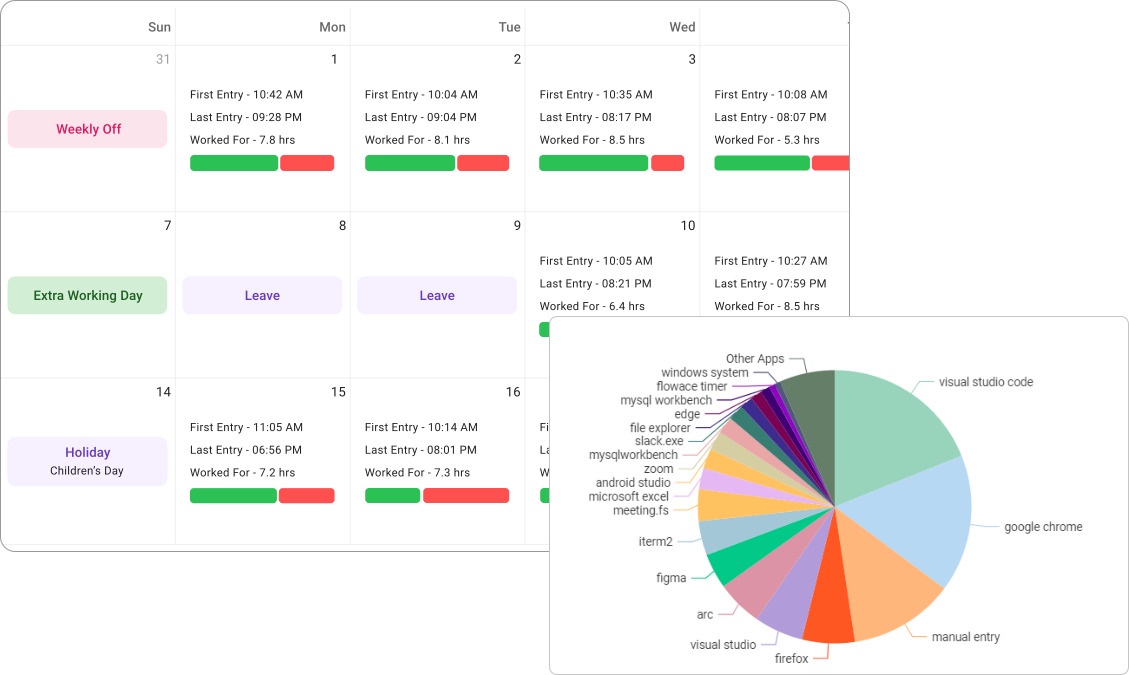In the ever-evolving landscape of remote work, efficient collaboration and productivity are paramount. With teams dispersed across different locations, time zones, and even continents, the need for robust team monitoring software has never been more critical. These platforms serve as the backbone of remote teamwork, enabling seamless communication, task management, and performance tracking. To ensure smooth operations and enhanced productivity, here are 10 must-have features in team monitoring software for remote teams:
Real-time Communication Tools: Effective communication lies at the heart of remote collaboration. Look for software that offers instant messaging, video conferencing, and audio calling capabilities. These tools facilitate quick exchanges, virtual meetings, and spontaneous discussions, fostering a sense of connectivity among team members despite physical distances.
Task Management Capabilities: Clear task allocation and tracking are essential for remote teams to stay organized and on track. Opt for software that enables task creation, assignment, prioritization, and progress monitoring. Kanban boards, Gantt charts, and to-do lists are valuable features that help visualize workflows and deadlines.
Remote Access Functionality: Seamless access to files, documents, and applications from anywhere is vital for remote teams. Choose software that offers cloud-based storage and remote desktop access. This ensures team members can retrieve necessary resources and continue working efficiently, whether they're at home, in a coffee shop, or traveling.
Collaborative Document Editing: Collaborative editing features streamline teamwork by allowing multiple users to work on documents simultaneously. Look for software with real-time document editing capabilities, version control, and commenting features. This ensures everyone is on the same page and reduces the back-and-forth of file exchanges via email.
Time Tracking and Reporting: Transparent time tracking features help remote teams monitor individual and collective productivity. Software that offers timesheets, timers, and activity logs enables team members to track their work hours accurately. Additionally, robust reporting tools provide insights into project progress, resource allocation, and efficiency metrics.
Performance Monitoring and Feedback: Regular performance evaluations are essential for remote teams to identify strengths, weaknesses, and areas for improvement. Choose software that facilitates performance monitoring through goal setting, progress reviews, and feedback mechanisms. This fosters accountability and helps team members align their efforts with organizational objectives.
Integration with Other Tools: Remote teams often rely on a variety of tools and applications to streamline their workflows. Look for monitoring software that integrates seamlessly with popular productivity tools such as project management platforms, CRM systems, and communication apps. This interoperability reduces the need for manual data entry and enhances workflow efficiency.
Security Measures: Protecting sensitive data and ensuring secure communication channels are crucial for remote teams, especially when working with confidential information. Prioritize software that offers robust security features such as end-to-end encryption, multi-factor authentication, and data encryption at rest and in transit. Compliance with industry standards and regulations is also essential for peace of mind.
Customizable Dashboards and Notifications: Personalized dashboards and customizable notifications empower remote team members to tailor their workspace according to their preferences and priorities. Look for software that allows users to customize dashboard layouts, widgets, and notifications based on their roles and responsibilities. This ensures relevant information is readily accessible, leading to increased productivity and engagement.
Scalability and Flexibility: As remote teams grow and evolve, scalability and flexibility become key considerations. Choose software that can scale with your team's needs and accommodate changes in workload, team size, and project complexity. Flexible pricing plans, customizable features, and adaptable workflows ensure the software can evolve alongside your organization.
In conclusion, investing in robust team monitoring software is essential for remote teams to thrive in today's digital landscape. By prioritizing features such as real-time communication tools, task management capabilities, remote access functionality, and security measures, organizations can empower their remote teams to collaborate effectively, communicate seamlessly, and achieve their goals with confidence.


No comments yet